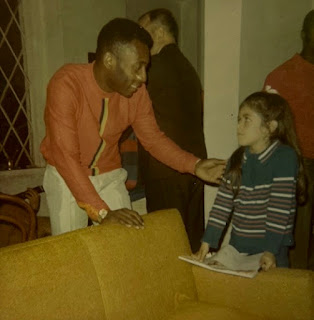Mastering nature's information: the blue rose
a) information about reality, like a train timetable, or what you tell a friend regarding last night dinner party;
b) information for reality, like recipes and algorithms; and
c) information as reality, like the pattern of rings in the trunk of a tree, or one's fingerprints.
If you can access a key piece of information as reality which is also information for reality, like the DNA of an organism, then you can modify its outcome and, magically, modify that piece of reality. "Magically" because magic spells try to do exactly that: they use words (semantic information about reality) to change (hopefully but unsuccessfully) the corresponding piece of reality. ABRACADABRA, if it were code instead of gibberish, would work like GATTACA (meaning).
All this to explain that the truly (mind the faked, pale, or "coloured") blue rose by Florigene is part of the informational revolution. If you read some relevant articles (see below) you will see that the colour of the rose (read: information) has been made possible by the engineering (read: informational) manipulation of genetic features (read: information). Genetic engineering is becoming more and more a matter of code designing. The difference is only that the code is "alive".
"Australian and Japanese researchers have demonstrated the application of RNAi (gene silencing) technology for gene replacement in plants, developing the first blue rose in the world. Till date, breeders have attempted to make true blue roses over many years, but none have successfully bred roses with blue pigment."
"World's first blue rose developed", May 10, 2005, BioSpectrum
"Roses are blue - Scientists Genetically Engineer the Impossible" November 30, 2004, Trends in Japan
"Breeders have attempted to make true blue roses over many years, but none have successfully bred roses with blue pigment. In its first commercial application in plants, the CSIRO-developed RNAi technology was used to remove the gene encoding the enzyme dihydroflavonol reductase (DFR) in roses. A truly blue rose has been the Holy Grail of rose breeders since 1840, when the horticultural societies of Britain and Belgium offered a prize of 500,000 francs to the first person to produce a blue rose." Link
"A truly blue rose has been the Holy Grail of rose breeders since 1840, when the horticultural societies of Britain and Belgium offered a prize of 500,000 francs to the first person to produce a blue rose. Molecular geneticists with Florigene and Suntory achieved the prize that had long eluded conventional rose breeders by combining something old, something new, something borrowed, and something blue." Biology News
b) information for reality, like recipes and algorithms; and
c) information as reality, like the pattern of rings in the trunk of a tree, or one's fingerprints.
If you can access a key piece of information as reality which is also information for reality, like the DNA of an organism, then you can modify its outcome and, magically, modify that piece of reality. "Magically" because magic spells try to do exactly that: they use words (semantic information about reality) to change (hopefully but unsuccessfully) the corresponding piece of reality. ABRACADABRA, if it were code instead of gibberish, would work like GATTACA (meaning).
All this to explain that the truly (mind the faked, pale, or "coloured") blue rose by Florigene is part of the informational revolution. If you read some relevant articles (see below) you will see that the colour of the rose (read: information) has been made possible by the engineering (read: informational) manipulation of genetic features (read: information). Genetic engineering is becoming more and more a matter of code designing. The difference is only that the code is "alive".
"Australian and Japanese researchers have demonstrated the application of RNAi (gene silencing) technology for gene replacement in plants, developing the first blue rose in the world. Till date, breeders have attempted to make true blue roses over many years, but none have successfully bred roses with blue pigment."
"World's first blue rose developed", May 10, 2005, BioSpectrum
"Roses are blue - Scientists Genetically Engineer the Impossible" November 30, 2004, Trends in Japan
"Breeders have attempted to make true blue roses over many years, but none have successfully bred roses with blue pigment. In its first commercial application in plants, the CSIRO-developed RNAi technology was used to remove the gene encoding the enzyme dihydroflavonol reductase (DFR) in roses. A truly blue rose has been the Holy Grail of rose breeders since 1840, when the horticultural societies of Britain and Belgium offered a prize of 500,000 francs to the first person to produce a blue rose." Link
"A truly blue rose has been the Holy Grail of rose breeders since 1840, when the horticultural societies of Britain and Belgium offered a prize of 500,000 francs to the first person to produce a blue rose. Molecular geneticists with Florigene and Suntory achieved the prize that had long eluded conventional rose breeders by combining something old, something new, something borrowed, and something blue." Biology News





Comments
Post a Comment